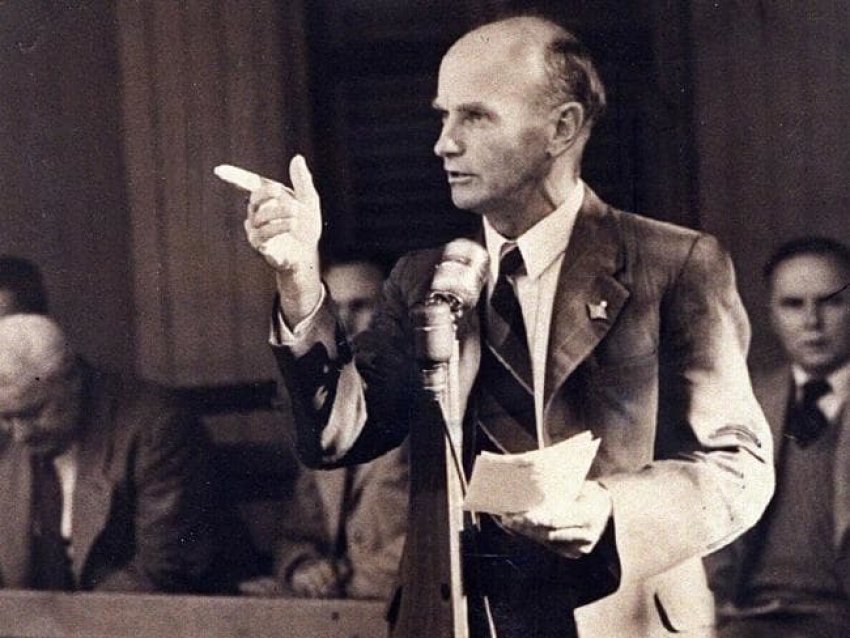
The recently re-published classic history of radical politics in Queensland, The Red North: The Popular Front in North Queensland, was launched at a series of forums in Melbourne, Brisbane and Cairns over the past month.
First published in 1981, The Red North by Diane Menghetti is now back in print in a new edition published by Resistance Books.
South of the border, Queensland may be better known for the reactionary Joh Bjelke-Petersen regime of the 1970s and ’80s, and more recently as the centre of Pauline Hanson’s One Nation Party.
Yet in the ’30s and ’40s, the “Red North” — the area of far north Queensland from Mackay to Cairns — developed as the strongest regional base of the Communist Party of Australia (CPA). Fred Paterson became the only Communist ever elected to an Australian parliament as the member for Bowen in the Queensland state legislature from 1944-50.
Menghetti tells the story of how, in that period, sugar workers, migrant communities, women activists and CPA members created a vibrant culture of radical activity and ideas in the region.
At the book launches, speakers welcomed the potential of the book to revive knowledge of this radical history at a time when the ultra-reactionary One Nation is trying to expand its support.
At the Melbourne launch on April 4, historian and feminist writer Carmel Shute, who joined the CPA in 1974, said: “Thanks to Diane Menghetti, we can fully appreciate the extent to which North Queensland in the ’30s and ’40s led the rest of Australia in internationalism and the strength, breadth and creativity of its working-class organisations.”
“The real turning point was the Weil’s Disease strike of 1935,” Shute explained of the dispute over the bosses’ response to a disease afflicting sugar workers. “It was a bitter strike lasting more than six months.
"The industrial court ordered secret ballots and cancelled all cane-cutting agreements in the Mourilyan area; the AWU [Australian Workers' Union] used strong-arm tactics [against CPA-led militants]; 150 police were sent up from Brisbane (shades of the 1891 shearers' strike); striking workers were evicted from their quarters and scab labour was widely employed.
“The strike was defeated. However, in July 1936, a general order for burning the cane before harvesting [the main demand of the strikers] was handed down by the court.”
She noted: “The struggle was an extremely broad one, involving entire communities in the north. By the late 1930s, North Queensland Region 9 was the biggest [CPA branch] outside the Sydney district.
Shute highlighted that Fred Paterson “was another reason for the popularity of the CPA in the north”.
“Working as a barrister, he became what his biographer Ross Fitzgerald calls ‘the people’s champion,’ defending workers, anti-fascists, Aborigines, and the unemployed, often for no fee. He was prominent in fighting racist employment practices in the sugar industry.
“An outstanding public speaker, Fred addressed hundreds of public meetings. He was often faced with bans. As a way of circumventing these bans, he spoke on a couple of occasions from below the high water mark on the beach. Once in Cairns, he stood on a table in the water!”
In Brisbane, at the launch at the Queensland Council of Unions auditorium on May 9, Aboriginal leader Sam Watson spoke of the role of Indigenous activists such as poet Kath Walker (Oodgeroo Noonuccal) in working with the CPA to promote Aboriginal rights struggles in Queensland in the 1960s and ’70s.
Carole Ferrier, editor of Hecate journal and author of Jean Devanny: Romantic Revolutionary, discussed the turbulent life of the prominent North Queensland Communist, feminist and writer, and the development of the CPA’s support base in the Red North region.
“I was fortunate to be able to spend a lot of time in North Queensland, and speak to old Communists and others who remembered the unique history of the Red North,” Ferrier said. “Many of the cane cutters who feature in Devanny’s novel Sugar Heaven were Italian militants who had fled from Mussolini’s fascist regime.”
“Devanny herself was involved in organising women in the north in the 1930s,” Ferrier said. Devanny was a strong feminist, as well as a Communist, and came into conflict with the party leadership on a number of occasions.
At the launch in Cairns on May 11, co-sponsored by Resistance Books and the Cairns Historical Society, union and Aboriginal activist Terry O’Shane spoke of the history of militant struggle on the Cairns waterfront. He also discussed the close collaboration between CPA members and Aboriginal activists.
Historian Jan Wegner also recounted her association with Menghetti, who became Professor of History at James Cook University, and described her as “one of the finest ever historians in the Far North”.
It is clear from Menghetti's well-researched book that the CPA based its success in the Red North on a deep implantation in the working-class and farming communities of northern Queensland.
Paterson campaigned tirelessly for the ‘principles of socialism’ in all his council and parliamentary work, and demonstrated the important role that elected positions can play in providing a means to help build progressive campaigns in the community.
The notable achievements of Paterson and his comrades in the Red North show that a rounded strategy to rebuild the socialist movement in this country necessarily includes all arenas of public life.
[Copies of The Red North: The Popular Front in North Queensland can be obtained from Resistance Bookshops or at www.resistancebooks.com.]